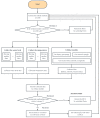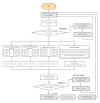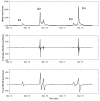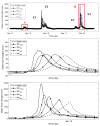Energy-Efficient Ultrasonic Water Level Detection System with Dual-Target Monitoring
- PMID: 33806888
- PMCID: PMC8061885
- DOI: 10.3390/s21062241
Energy-Efficient Ultrasonic Water Level Detection System with Dual-Target Monitoring
Abstract
This study presents a developed ultrasonic water level detection (UWLD) system with an energy-efficient design and dual-target monitoring. The water level monitoring system with a non-contact sensor is one of the suitable methods since it is not directly exposed to water. In addition, a web-based monitoring system using a cloud computing platform is a well-known technique to provide real-time water level monitoring. However, the long-term stable operation of remotely communicating units is an issue for real-time water level monitoring. Therefore, this paper proposes a UWLD unit using a low-power consumption design for renewable energy harvesting (e.g., solar) by controlling the unit with dual microcontrollers (MCUs) to improve the energy efficiency of the system. In addition, dual targeting to the pavement and streamside is uniquely designed to monitor both the urban inundation and stream overflow. The real-time water level monitoring data obtained from the proposed UWLD system is analyzed with water level changing rate (WLCR) and water level index. The quantified WLCR and water level index with various sampling rates present a different sensitivity to heavy rain.
Keywords: cloud-based computing platform; dual microcontroller; dual targeting; renewable energy; ultrasonic water level detection; water level changing rate.
Conflict of interest statement
The authors declare no conflict of interest.
Figures




















References
-
- Woodworth P.L., Smith D.E. A one year comparison of radar and bubbler tide gauges at Liverpool. Int. Hydrogr. Rev. 2003;4:42–49.
-
- Euliss N.H., Mushet D.M. Water-level fluctuation in wetlands as a function of landscape condition in the prairie pothole region. Wetlands. 1996;16:587–593. doi: 10.1007/BF03161350. - DOI
-
- Zheng G., Zong H. High accuracy surface perceiving water level gauge with self calibration; Proceedings of the 2009 International Conference on Mechatronics and Automation; Changchun, China. 9–12 August 2009; pp. 3680–3686.
-
- Bartos M., Wong B., Kerkez B. Open storm: A complete framework for sensing and control of urban watersheds. Environ. Sci. Water Res. Technol. 2018;4:346–358. doi: 10.1039/C7EW00374A. - DOI
Grants and funding
LinkOut - more resources
Full Text Sources
Other Literature Sources

